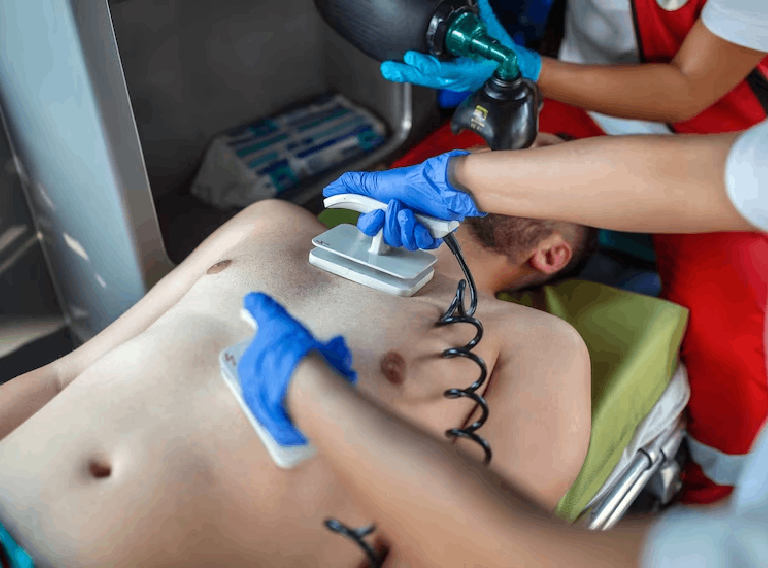Cardiopulmonary Resuscitation
CPR stands for Cardiopulmonary Resuscitation, which is an emergency procedure performed to manually preserve brain function until further measures can be taken to restore blood circulation and breathing in a person who has suffered cardiac arrest or respiratory failure. It involves a combination of chest compressions and rescue breaths to maintain oxygen supply to the lungs and vital organs. CPR is a crucial skill that can save someone’s life in an emergency situation.
How is CPR beneficial?
CPR can be incredibly beneficial in saving someone’s life in an emergency situation. The main goal of CPR is to restore blood flow and oxygen supply to the vital organs, particularly the brain, until more advanced medical interventions can be performed. Here are some of the benefits of performing CPR:
- It can prevent brain damage: If a person’s brain is deprived of oxygen for more than a few minutes, they can suffer irreversible brain damage. Performing CPR immediately can help maintain oxygen supply to the brain, preventing brain damage and potentially saving the person’s life.
- It can increase the person’s chances of survival: CPR can help to keep the heart and lungs functioning until more advanced medical interventions can be administered. By performing CPR, bystanders can increase the person’s chances of survival.
- It can reduce the risk of disability: In some cases, even if a person survives cardiac arrest or respiratory failure, they may suffer permanent disabilities such as brain damage. Performing CPR can help to reduce the risk of these long-term complications.
Overall, performing CPR can make a significant difference in saving someone’s life and reducing the risk of long-term complications.
What is the step by step procedure to perform CPR
The following are the basic steps to perform CPR on an adult:
- Check for responsiveness: Shake the person and shout, “Are you okay?” If the person does not respond, call for emergency medical help.
- Open the airway: Tilt the person’s head back and lift their chin to open the airway.
- Check for breathing: Look, listen, and feel for signs of breathing. If the person is not breathing or only gasping, begin chest compressions.
- Perform chest compressions: Place the heel of your hand on the center of the person’s chest, between the nipples. Place your other hand on top of the first hand, and interlace your fingers. Begin compressions by pushing down hard and fast, about 2 inches deep and at a rate of 100 to 120 compressions per minute.
- Give rescue breaths: After 30 compressions, tilt the person’s head back and lift their chin again. Pinch the person’s nose and give two rescue breaths into their mouth, making sure their chest rises with each breath.
- Repeat compressions and breaths: Continue with cycles of 30 compressions followed by two breaths until help arrives, or the person starts breathing again.
It is important to note that CPR training is highly recommended to ensure proper technique and confidence in performing the procedure. The above steps are a basic guide for CPR on adults, and there may be slight variations for performing CPR on children or infants.
Best Cardiologists in Suchitra and Kompally
Russh Multi Speciality Hospital proudly presents the epitome of cardiac care – the best Cardiologists in Suchitra and Kompally. Our esteemed team of physicians, celebrated for their exemplary proficiency and compassionate approach, ensures your heart health is in the best hands. With an unwavering commitment to excellence, our top-tier Cardiology experts offer cutting-edge solutions tailored to your unique needs. From advanced diagnostics to personalized treatment plans, Russh prioritizes your cardiovascular well-being.
Experience unparalleled cardiac healthcare guided by the best Cardiologists in Suchitra and Kompally, exclusively at Russh Multi Speciality Hospital. Your heart’s health is our utmost priority.

